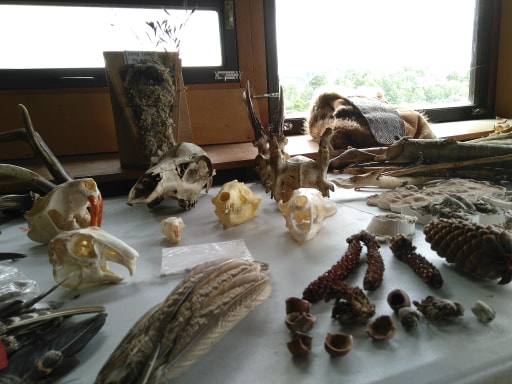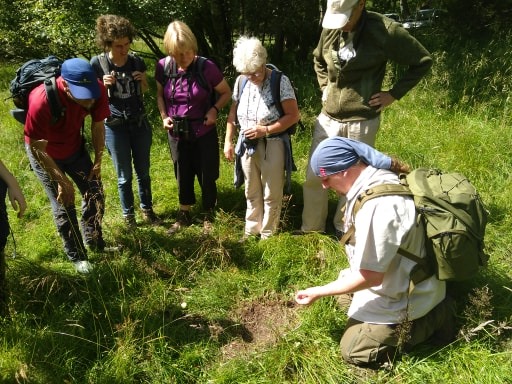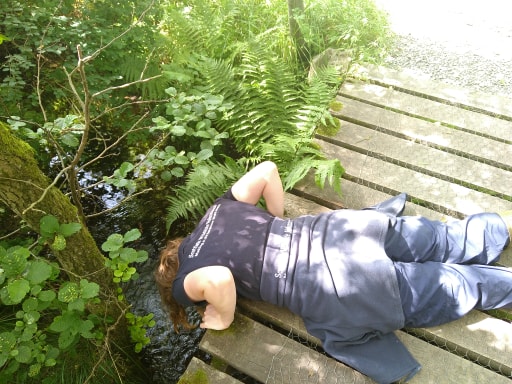Fantastic Beasts and Where to Find Them
This week we were joined by Stuart Wedge from Woodland Ways for a workshop in tracking, identifying and interpreting the wildlife here at Loch of the Lowes.

The day started off with a bit of theory and animal foot morphology that we could put it into practice later in the day, including an explanation of the four different categories of foot morphology found in mammals.
Stuart reminisced about his time in South Africa where within two weeks he’d learnt to identify over 20 species of antelope by their footprints. He also set us straight on some common misconceptions about animal tracks, particularly ones that are often confused.
Stuart also took us through the concept of bird language, interpreting the calls and behaviour of birds. This included twelve different types of alarm behaviours that can help you tap in to the stories going on around you- for example, a robin will fly in a “hook” pattern to see you out of its territory or, if a woodland’s ever descended into silence around you, chances are there could be a goshawk perched nearby.
After lunch, we set out into the meadow and woodland on the reserve to try out tracking for ourselves and see what we could find.

Our first encounter was a deer trail and couching site in the meadow- tell tale signs were fallow deer tracks in mole hills along the trail as well as depressions in the grass. We also stopped to discuss the distinctive browsing patterns of deer along the trail and how they compare with those of rabbits and hares. Deer tear grass when they browse, leaving a thin strand of material behind, as opposed to a clean cut- this is because they lack upper teeth, instead having a horny pad of keratin which they bite against.
Other ways to find tracks through an area include setting sand traps- where you lay play sand over a suspected trail to see what’s passing through. Another option is an ink trap- a waterproof cover over two pads of non-toxic ink and some white paper to capture the tracks of anything coming through. Even heading out on a walk the day after a bit of rain its likely that you’ll come across some well-defined tracks- so definitely something you can try at home.

Other signs we found on our walk included old scars on saplings, left by deer marking their territory by rubbing their scent glands beside their eyes and between their antlers on to the bark, squirrels nibbling away at birch bark to get to the sweet sap underneath and small trees felled by beavers- with the cut being at a characteristic 45o angle. We were also encouraged to peer underneath bridges over waterways in the hope of seeing scat on top of protruding stones or logs- a sign of otters in the area.
If you missed out this time, Stuart will be running another workshop at Lowes in February– keep your eyes out! He is also running a more in depth weekend-long course in East Lothian with Woodland Ways on the 6th of September. You can find more details here.
We’d like to say a huge thank you to Stuart for an interesting day and sharing his knowledge with us.
The Assistant Ranger Team
Help protect Scotland’s wildlife
Our work to save Scotland’s wildlife is made possible thanks to the generosity of our members and supporters.
Join today from just £3 a month to help protect the species you love.
Preface
This week we were joined by Stuart Wedge from Woodland Ways for a workshop in tracking, identifying and interpreting the wildlife here at Loch of the Lowes. The day started …
